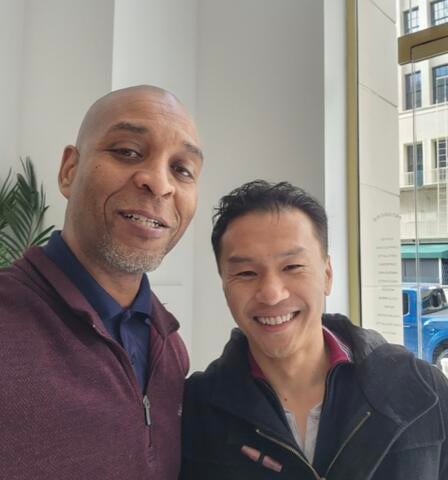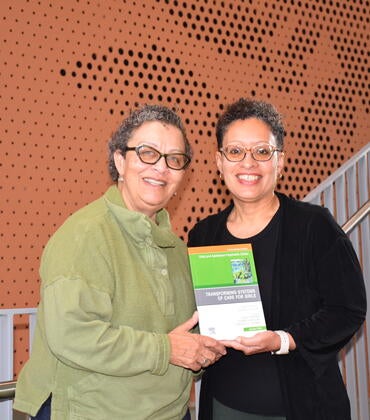Most of us now use emoji to convey feelings or thoughts, a practice that has become ubiquitous along with the use of smartphones. Could such emoji have use in medical communication?
Yes, according to three researchers, including Kendrick A. Davis of the School of Medicine at the University of California, Riverside, who argue in an invited commentary that the use of emoji in health care communication presents many advantages, including their universal appeal and accessibility to diverse populations.
The commentary, published today in the journal JAMA Network Open, advances a strong case for the use of emoji to improve communication between patients and physicians.
“By promoting more effective communication between patients and care providers, as well as between clinicians themselves, a universal emoji-based language system with a common agreement of meanings can be developed,” the researchers write.
Davis, a health sciences associate clinical professor of psychiatry and neuroscience, has been designing an emoji-based measurement system for the past 2 1/2 years and has a study, approved by the UCR Institutional Review Board, that uses emoji to measure mental health in college students.
“Emoji have universal appeal,” Davis said. “Their use can bypass levels of education, language, and age. They open a bridge for communication.”
Davis explained that most communication in the medical field is not purely linguistic and usually involves surveys or questionnaires. But that is where breakdowns occur.
“Surveys are usually circulated to patients in a variety of different stages of their care. But many surveys are wrought with language that can introduce a barrier,” he said. “This is where emoji, which are friendly and universally utilized, come into play by replacing survey language that can be hard for some patients to understand.”
Davis’ co-authors on the commentary are emoji research pioneer Dr. Shuhan He of Harvard Medical School in Massachusetts and Jennifer 8. Lee of Emojination and Unicode Consortium in California. They note that “to establish a standardized set of medically relevant emoji, it is crucial for medical societies and relevant organizations to not only endorse individual emoji but also come together to agree on a comprehensive set of symbols that are universally recognized and understood.”
The trio note in their commentary that effective communication is essential for successful treatment and care, but certain health situations, such as stroke, brain injury, or vocal impairments, can create substantial barriers.
“This barrier could be difficulty speaking while being mechanically ventilated,” Davis said. “A patient could also simply not be able to speak while receiving clinical care. Emoji can be helpful in such situations with the patient simply pointing to an emoji on a scale to indicate how they feel. Emoji can also be useful in countries where illiteracy is high.”
According to Davis, the length of medical surveys and their low response rates are major obstacles to data collection.
“Emoji addresses both these issues,” he said. “With emoji you can greatly condense the questionnaire sent out to patients. Hopefully, this appeals to patients, leading to an increase in response rates. I have designed more than 500 surveys and questionnaires for the UCR School of Medicine in the past 10 years. I have found people don’t respond well to surveys. No one wants to answer pages and pages of questions, no matter how they are incentivized. With emoji, you can condense the content and quickly get to the point of the most pressing issues and questions.”
A quantitative researcher, Davis acknowledged that qualitative methods are also useful.
“We, who are quantitatively biased, inevitably miss some information,” he said. “We need a qualitative lens. I am looking to partner with researchers who would like to work with us and are qualitatively heavy in their methodology.”
Despite the popularity of emoji, Davis believes a large population worldwide is not aware of their power.
“They can feel cartoonish,” he said. “We hope our commentary will bring more legitimacy to the understanding that there is a future for emoji beyond their cartoon-like illustration. Emoji have a lot of power because they are so readily used in communication and exclude only few populations, such as the visually impaired. If the use of emoji is meaningful in communication with doctors and patients, it’s probably meaningful in communication in other spaces where services and products are delivered to people.”
Davis is passionate about the UCR School of Medicine addressing the shortage of primary care doctors in Inland Southern California, a geographically large, ethnically diverse, and rapidly growing region of 4.64 million people. The region is medically underserved with only 41 primary care physicians, or PCPs, for every 100,000 people as compared to the recommended ratio of 60-80 PCPs per 100,000 according to the California Health Care Foundation.
“Almost 40% of Americans are on Medicare and Medicaid, which are strained and service primarily the poor,” he said. “It is PCPs who service these Americans, which means it is the impoverished population that receives the bulk of primary care. But if Medicare and Medicaid are strained to even provide care, they have few resources for data collection and reporting. That’s what we are trying to address.”
The commentary is titled “Interpreting Emoji: A Language for Enhancing Communication
in Health Care.”
Header image shows Kendrick A. Davis. (UCR/Stan Lim)




